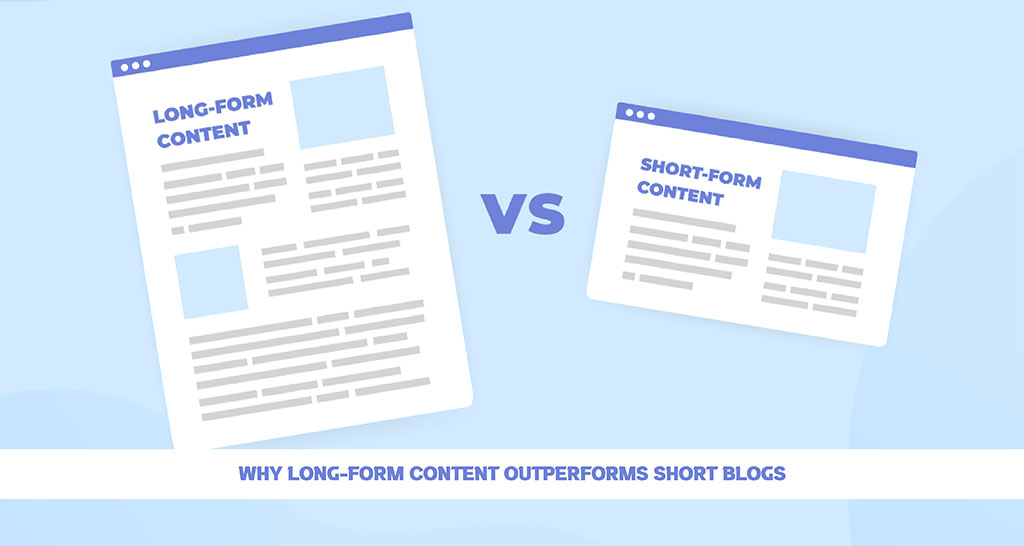Long-form content is still a potent tool for marketers and brands in a digital world full of short updates and quick reads. Long-form content routinely beats short blogs in important areas like SEO, engagement, and conversions, even though short blogs might be simpler and quicker to create. Long-form content is superior for the following reasons:
- Increased Value and Depth
Writers can delve deeper into a topic with long-form content, providing readers with in-depth explanations, examples, and solutions. In addition to meeting user intent, this depth increases brand authority and trust.
- Higher Rankings in Search Engines
Content that provides comprehensive answers to user queries is favoured by search engines. Compared to short blog posts, long-form articles naturally contain more keywords, related phrases, and semantic context, which raises their search engine ranking.
- Extended Stay on Page
Long-form articles are typically read for longer periods of time by users, which tells search engines that the content is interesting and pertinent. Overall, SEO performance is improved by this longer dwell time.
- Increased Shares and Engagement
Readers are more inclined to share content when it is valuable. Guides, thought leadership articles, and in-depth how-tos are examples of long-form content that frequently receives more social media shares and backlinks than short blogs.
- Additional Conversion Opportunities
Articles that are longer allow for the development of the reader’s journey. To help turn casual readers into leads or customers, they can incorporate case studies, testimonials, calls to action, and internal links.
- Establishes Credibility for Brands
Publishing lengthy, thoroughly researched content establishes a brand as an authority. Readers are more likely to consult sources they believe to be reliable and informed again.
- Encourages Repurposing of Content
To maximise content value and reach, a single long-form piece can serve as the basis for several shorter assets, such as infographic visuals, video scripts, or social media snippets.
- Fulfils Complex Search Criteria
These days, users pose complex queries, particularly considering the growth of voice queries and AI search tools. The layered solutions these users seek can be found in long-form content.
Short blogs can still be useful in content strategy, but they frequently do not produce significant outcomes. When written with intention and depth, long-form content not only ranks higher but also forges closer bonds with readers. Substance still prevails in the struggle for influence and visibility, and long-form content does just that.

